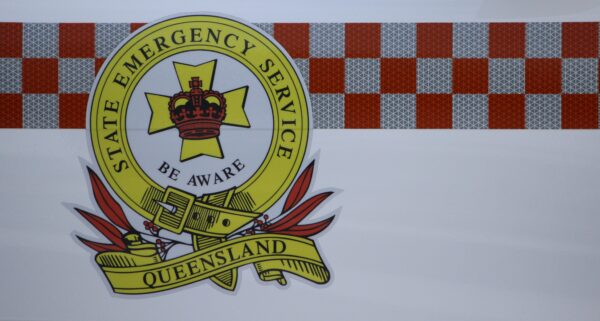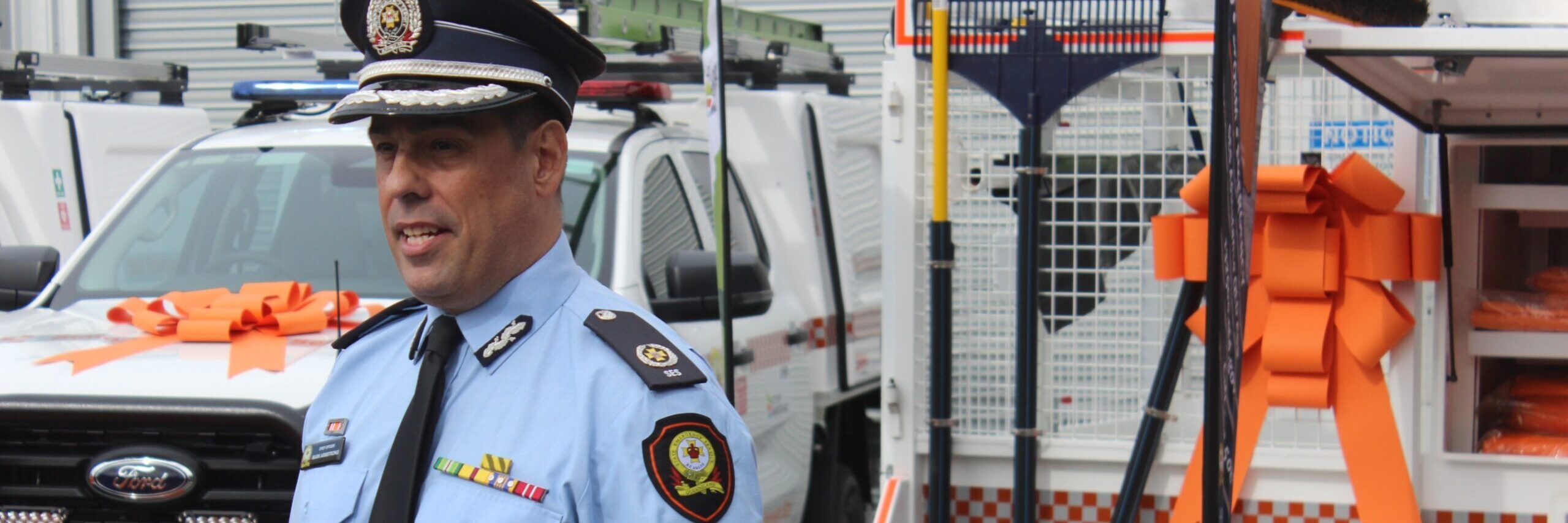Mark Armstrong addresses volunteers and families at the handover of new vehicles to Moreton Bay SES on Saturday. Photo: ANDREW KACIMAIWAI
QUEENSLAND SES
News Cop exclusive
“Head down, get those skills up, get your training done, get things ready” — that was the message Queensland SES chief officer Mark Armstrong had for Moreton Bay volunteers.
He was speaking during the presentation of 10 new vehicles and equipment worth $500,000 at unit headquarters in Murrumba Downs, northern Brisbane, on Saturday.
> EARLIER STORY: Half-billion-dollar boost for Moreton Bay SES
“We’ve got to get our new members on board and trained and ready for the next high risk weather season which is only two months away,” he told the assembled volunteers.
“Looking at the long-term forecasts at the moment, it might be busy again so head down, get those skills up, get your training done, get things ready.”

But Armstrong has been heartened by the public interest shown in their work after the three major disasters in the state earlier this year: floods in the north, tropical cyclone Alfred in the south-east and flooding out west.
In a live, and exclusive, interview with News Cop, Armstrong says they now have 5404 volunteers statewide, an increase of 409 or 8% in the 2024-25 financial year.
And there are more volunteers to come.
“Moreton Bay SES numbers are growing. We’re getting more volunteers. A lot of people saw what [we] did at the start of this year and said, ‘I want to be a part of that organisation’,” he says.
“They’re coming onboard now. Units like this are growing very quickly.”
He told News Cop that they’ve had “a lot of interest, a lot of expressions of interest … many, many people went online and expressed interest”.
“We’re working through all of those applications at the moment but I think it just shows that they’re interested because they saw the SES out in the communities doing the work.”
He agrees that the interest has been driven in part by the work SES units have done cleaning up after the three disasters this year.
“You know we had a very high profile during those events which helped people (become) interested in joining. We’re looking forward to the growth on the back of that,” he told News Cop.
RISING AWARENESS
He also agreed that interest was stimulated by footage of overseas disasters like the recent deadly flooding in Texas.
“I think people are looking for opportunities about how they can support their communities,” he says.
“We’ve seen a lot of examples of disasters which arise suddenly and have a really big impact. That event in the US, with so many fatalities, was horrible.
“If you recall the very large bushfires that they’ve had in the US and are still having happening …. that’s certainly raising awareness here in our communities.”
Tropical Cyclone Alfred also reinforced the need for residents to become aware of what to do in climate events that they may not normally experience, Armstrong says.
“The state government policy is pretty clear that we’re going to see more disasters and they’re going to be (of) higher intensity; part of that is tropical cyclones across a wider season and coming further south so that’s definitely part of the planning.”
While swiftwater rescues are handled by the Qld Fire Department (QFD), Armstrong says they provide support with flood waters, particularly evacuations and resupply operations.
When asked if the SES may need to develop its own swiftwater rescue capability, he says that’s a matter for the future.
“As we look to where we develop capabilities in future, how we provide support in flood waters is a critical one and we [will] work with QFD to understand where’s the best organisation to deliver that.
“Sometimes it’s QFD, in other areas it’s SES, so we work together to develop that that capability,” Armstrong says.
“We’ve got over 200 flood boats around the state here. We’re maintaining that capability.”






